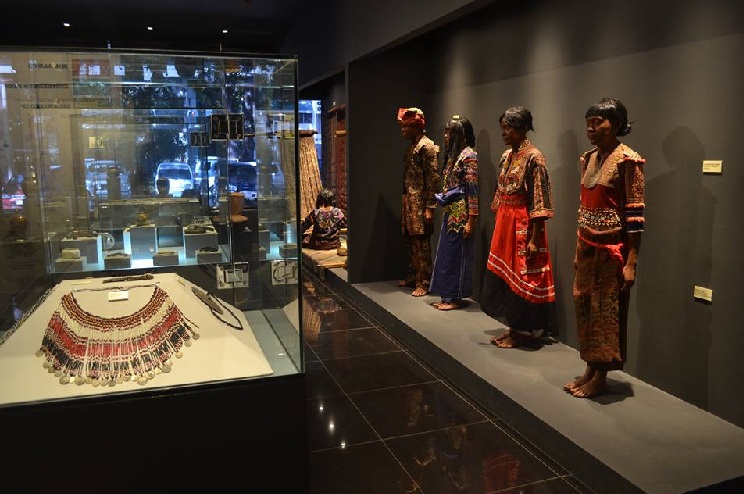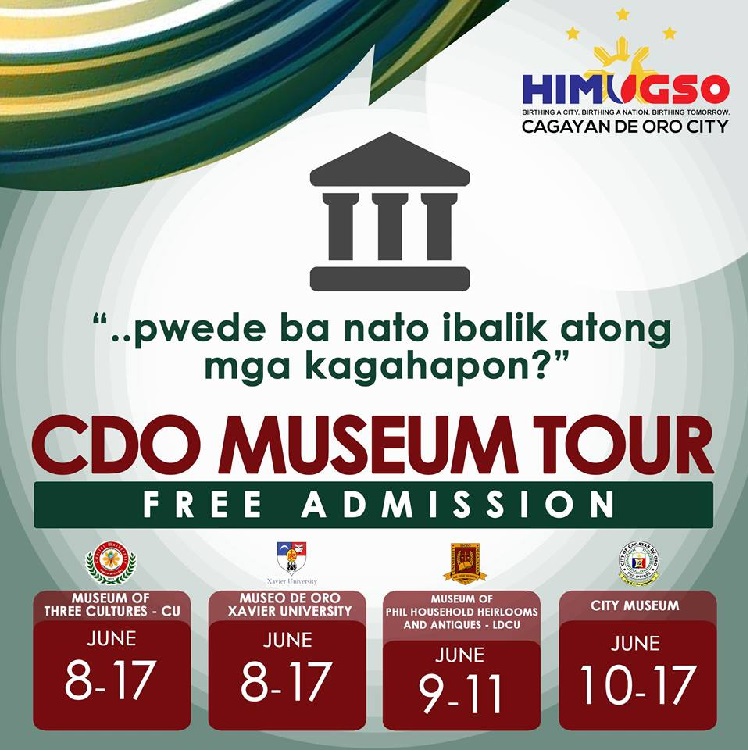
LUMAD CULTURE. The Ethnology of Mindanao room exhibits ethnographics of different Islamized and non-Islamized lumad communities in the island, including their musical instruments, pieces of jewelry used by men and women, vibrant textiles, weaponry, and brass-crafted ornaments of the Meranao. Photo courtesy of Museo de Oro
Words by Stephen J Pedroza
Museo de Oro, the country’s first folkloric museum, is open to the public for free from June 8 to 17 as part of Himugso 2016, the local celebration of the 118th Philippine Independence Day and the 66th anniversary of the Declaration of the City Charter of Cagayan de Oro.
A local term for “giving birth,” Himugso carries the tagline: “Birthing a City. Birthing a Nation. Birthing Tomorrow.”
Looking back
The inception of the Museo began in August 1967 when its founder, Fr Francisco Demetrio SJ conceived a dream of building a place to accommodate historical and archaeological items, and would showcase the traditions and folklores of Mindanao.
At present, the Museo has three major collections—The Ethnohistory of Northern Mindanao, The Ethnology of Mindanao, and Fr Francisco Demetrio SJ Gallery—forming a pivotal repository of culture, arts, and knowledge to understand the past of the second largest island of the Philippines.
Among the artifacts showcased in the first exhibit room were fossilized remains of the Stegodon found in Laguindingan, Misamis Oriental, archaeological materials dug from the Huluga Cave in Taguanao and Tagbalitang Cave in Villanueva, Misamis Oriental, which date back from the late Iron Age (300BCE to 1000CE), and religious paraphernalia during the Christianization period in Mindanao.
Relics from the Spanish, Japanese and American periods are also displayed in the first exhibit, including the charcoal sketches and water color paintings of Joaquin and Vicente Elio from Mambajao, Camiguin. Don Vicente Elio was a classmate of our National Hero Jose P Rizal at Ateneo de Manila.
Having the most number of indigenous people communities or lumads, Mindanao also offers a diverse mix of heritage, fashion, and traditional tools.
The Ethnology of Mindanao room exhibits ethnographics of different Islamized and non-Islamized lumad communities in the island, including their musical instruments, pieces of jewelry used by men and women, vibrant textiles, weaponry, and brass-crafted ornaments of the Meranao.
Imposing at the entrance of the second exhibit room is a painting portraying the myths of creation of selected ethnic groups pertaining to the creation of the universe and the humankind.
Heart of history and cultural formation
In the second level of the newly-renovated Museo located the gallery for contemporary exhibitions.
Fr Demetrio's collection of myths and narratives came to life in the portrayals and works of art of local artists over the years. After the demise of Fr Demetrio in 1996, the Museo has remained open to local and international artists.
Another addition to the gallery was the memorabilia section of the museum’s founder, showcasing his photographs, news and magazine clippings, awards, and a numismatic collection.
One of the prized assets of Museo is the rare copy of the French dinner menu (French carte de jour) during the ratification of the Declaration of Independence during the Malolos Congress on September 29, 1898.
The precious menu designed by Arcadio Arellano details the food and drinks served during that special evening of our nation’s history. The Museo only displays the menu, now with an English translation beside its glass case, on special occasions.
The Museo, inaugurated by the late President Corazon C Aquino in August 1987, has been under the banner of Xavier Center for Culture and the Arts since 2009 and supported by the National Commission for Culture and the Arts.
Museo de Oro aligns its raison d'être to be the heart of history and cultural formation in this part of the country and a structure engaging the Filipinos of the present generation to appreciate and look back to our roots, a fundamental fragment in understanding the present and, nevertheless, the future. ∎
Xavier's Museo de Oro is open from Tuesday to Saturday, 8AM-12NN and 1PM-5PM. However, it's closed during Mondays and Sundays.

MUSEUM TOUR. Image source:Facebook page of Cagayan de Oro City, Philippines.